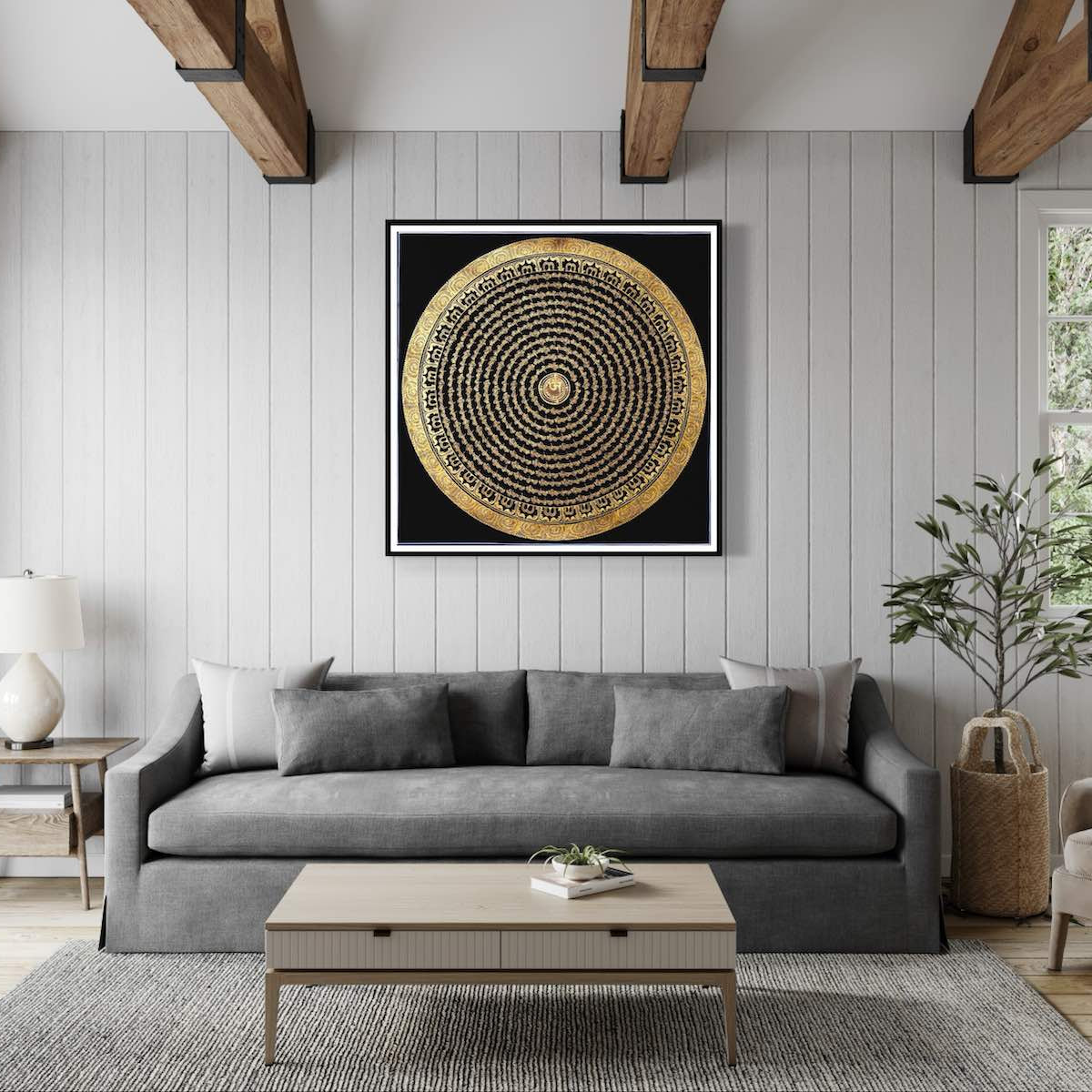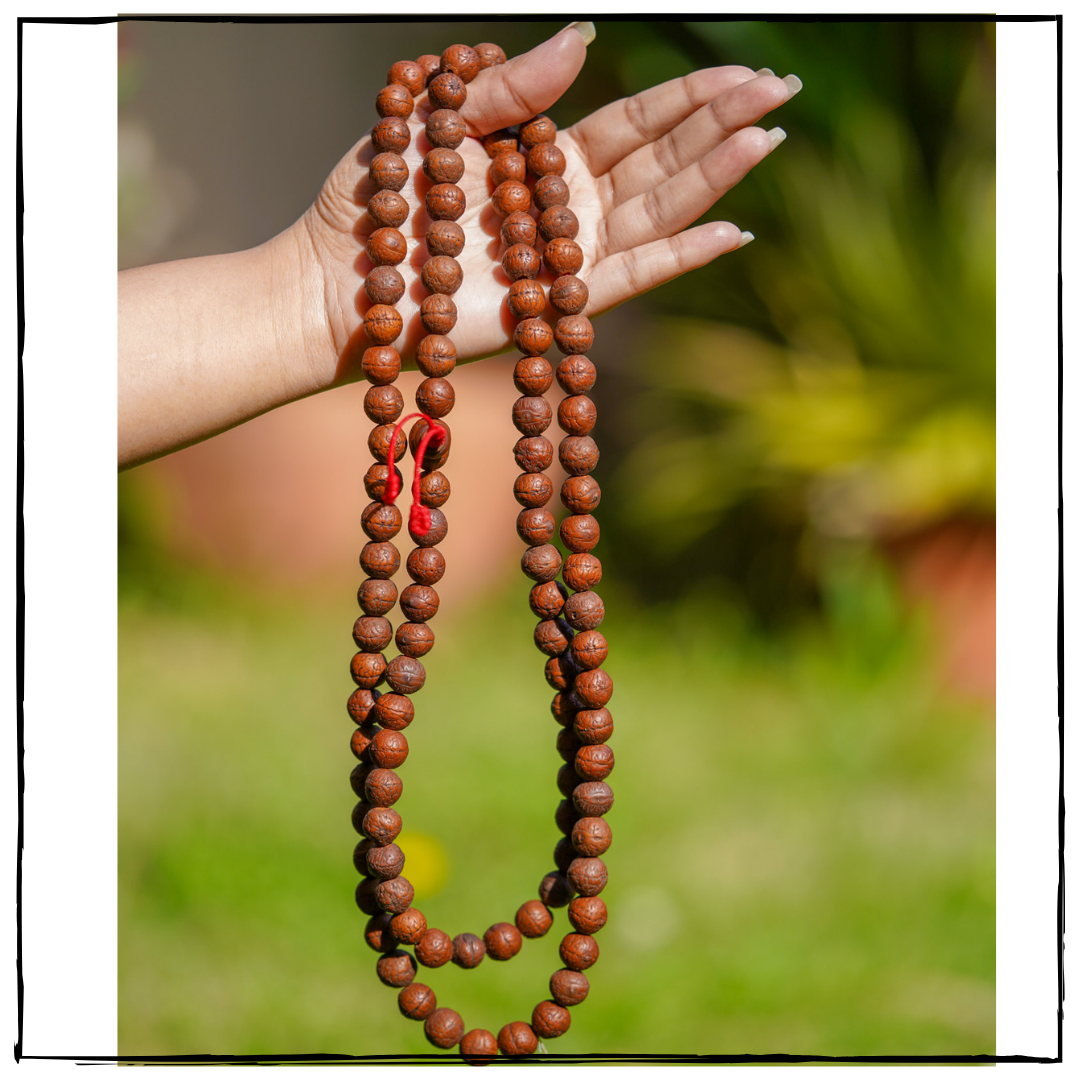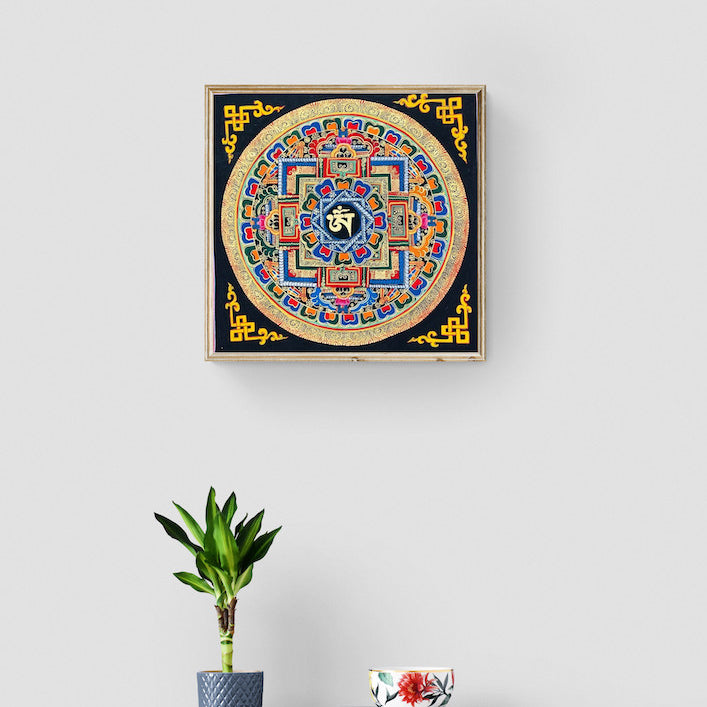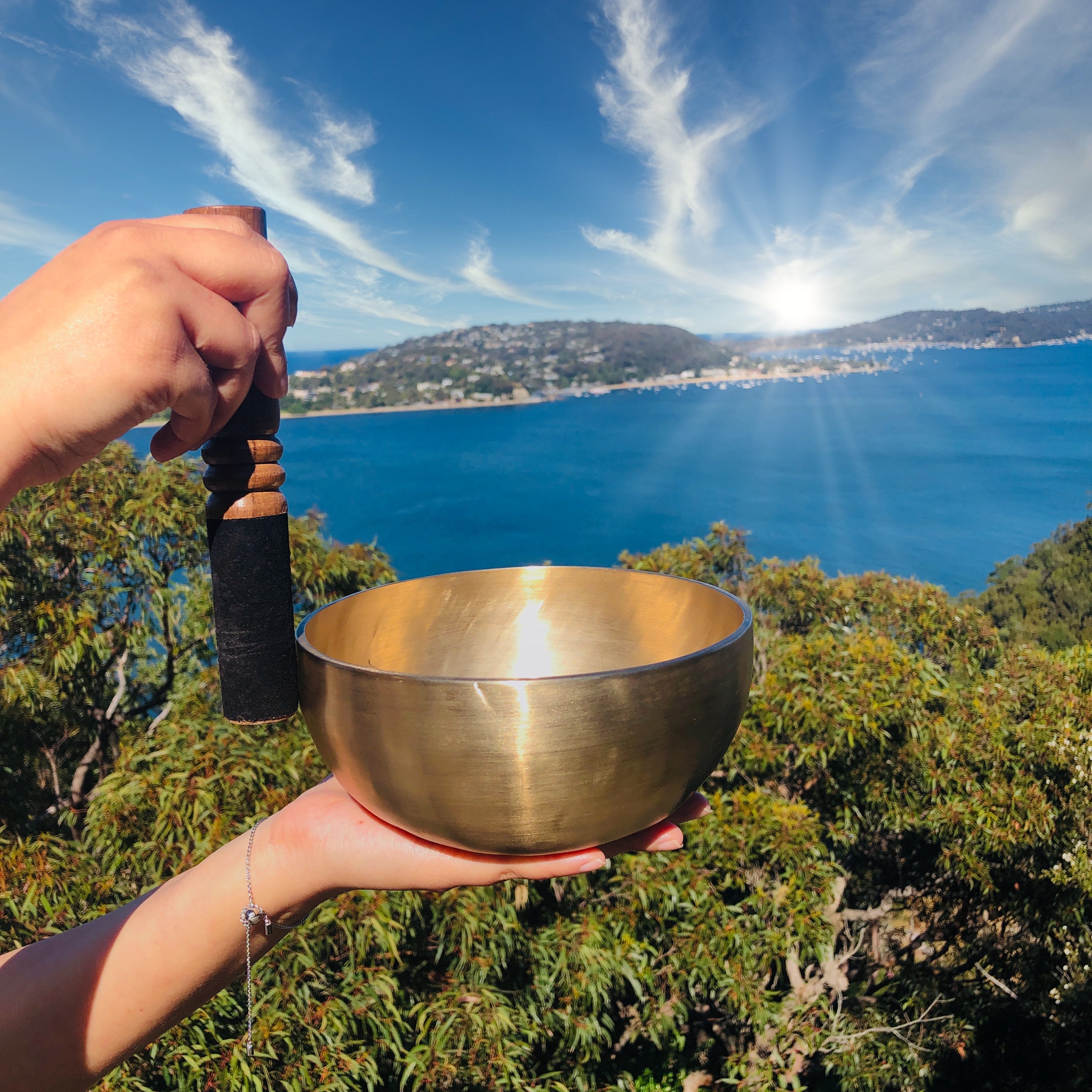Amitayus with Brocade
Couldn't load pickup availability
Description
Thangka Painting of a Amitabha Buddhafor Spirituality, Meditation or for your home. All Thangka Paintings at Lucky Thanka are genuine hand painted from Nepal by highly skilled lama artists. Painted on cotton canvas using natural stone color and other materials like gold, silver other semi precious minerals. TheAmitabha Buddhacan be a great tool for meditation to transform and purify our Body, Speech and mind. These art can also be a very beautiful wall hanging decoration ideas for your home and office.
Specification
- Hand Painted
- Master Quality Thangka Painting
- Materials: Semi-Precious Natural Minerals, Pure Gold
- Base: Cotton Canvas
- Origination: Nepal
Amitabha, the Buddha of Eternal Life, is also known as Amitayus, one of the five Cosmic Buddhas of Esoteric Buddhism. He is shown in his paradise, Sukhavati, the Western Pure Land, enthroned beneath a flowering tree festooned with strands of jewels and auspicious symbols. To either side the sky is filled with throngs of ecstatic demigods who bear offerings and scatter flowers. Seated below are the eight great bodhisattvas, and between them are two large, low tables covered with offerings. To either side are the vast assembled audiences who receive Amitayus’s message. At the bottom, set within a vast panoramic landscape, are courtyards, giant lotus flowers, and pools from which the purified are being reborn.

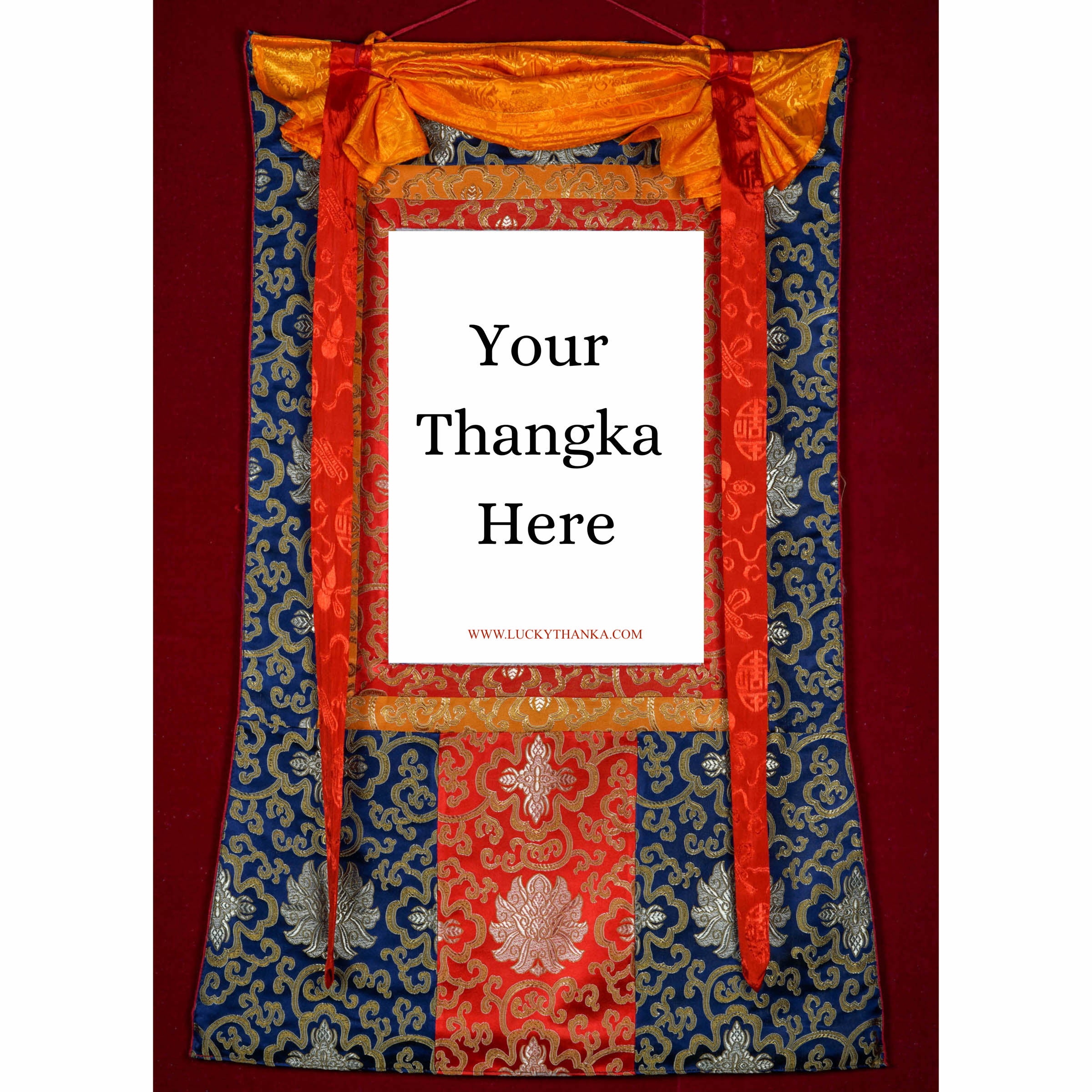
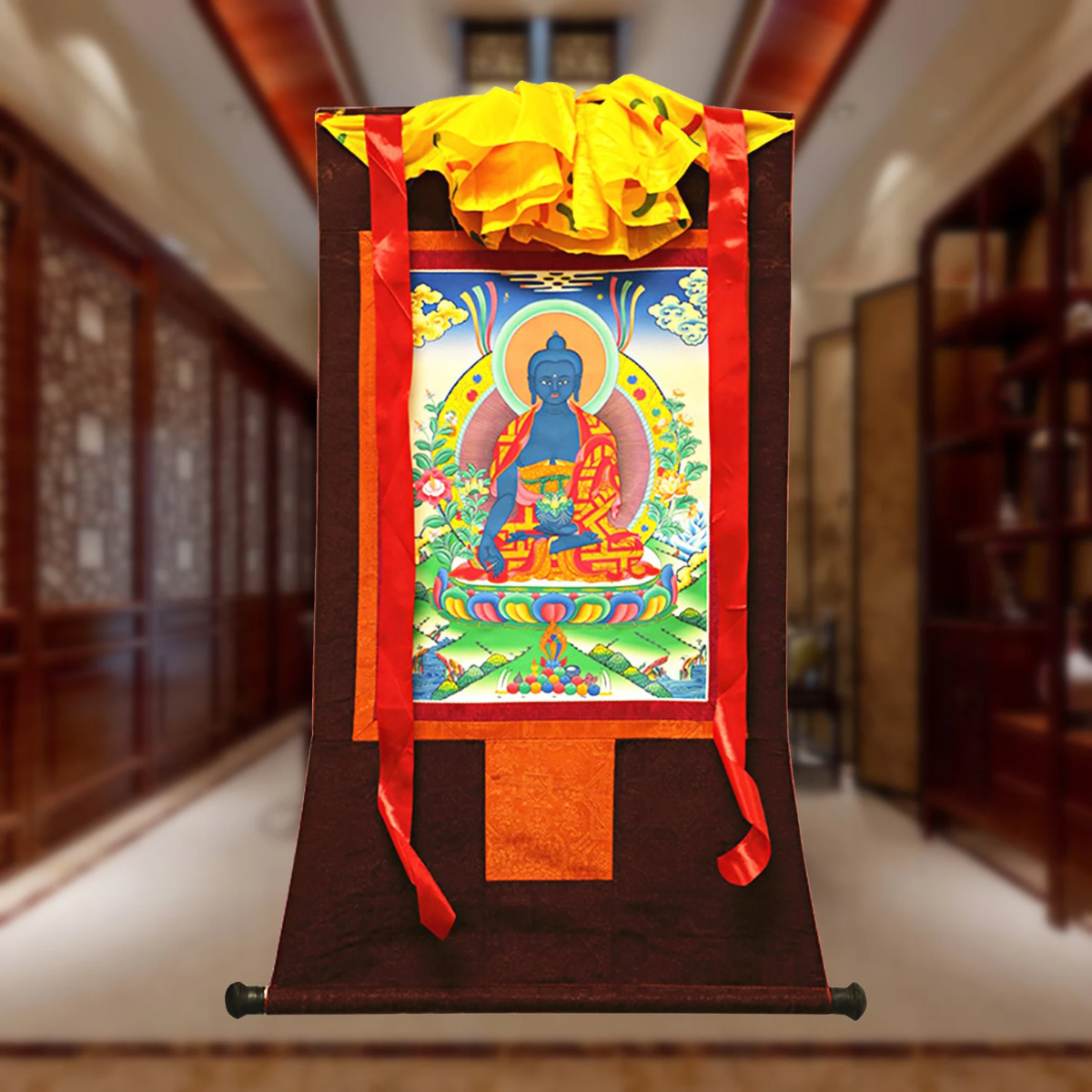
Hand Embroidery Brocade
Want to add a Brocade to your beautiful Thangka Painting? Traditional Style Brocade has been one of the most popular form of mounting as it has a greater religious merit.
Note: Make sure you have added the Thangka to your cart first.
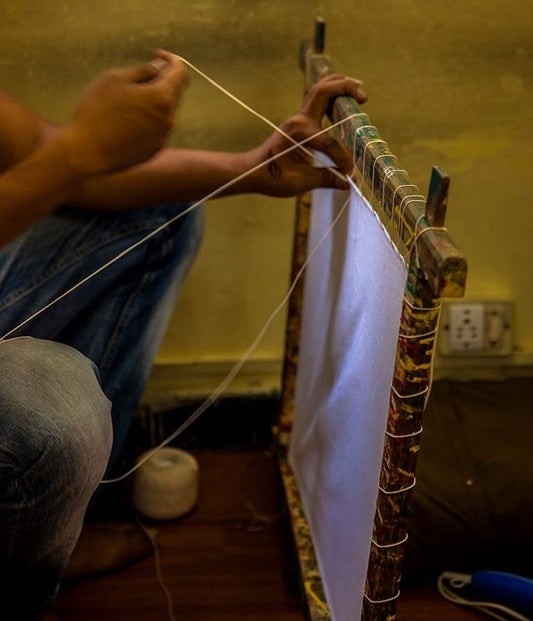
100% Cotton Canvas
Preparing the Cotton canvas before starting to paint a Thangka. This process includes washing, drying, stretching, sizing and everything needed to make a perfect base for the thangka to last for centuries.
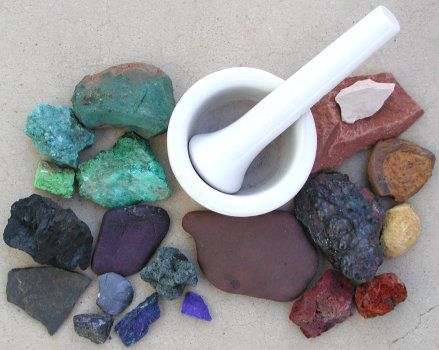
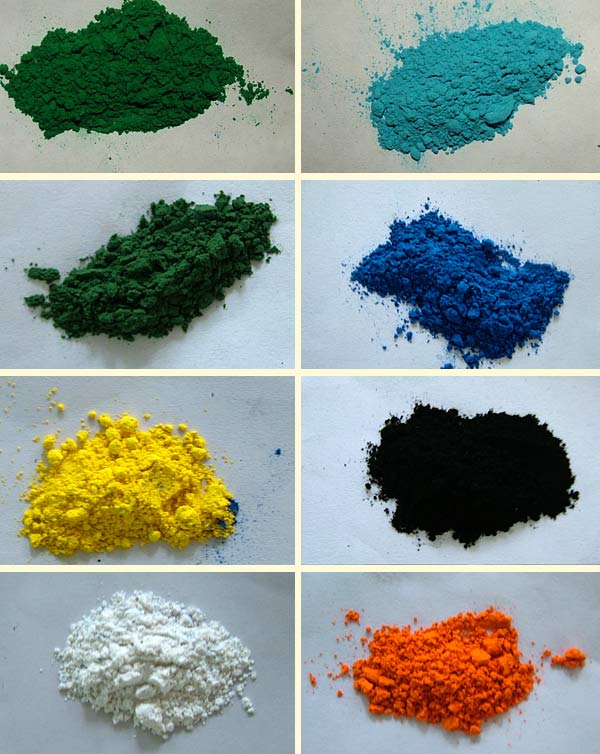
Natural Minerals
Thangka Paintings are painted using the natural minerals. These are firstly grind into the powder form and then used in the thangka as a paint.













